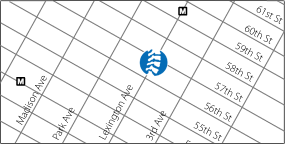Healing your heel: Dealing with "Plantar Fasciitis"
 Dr. Marc A. Bochner on
Dr. Marc A. Bochner on  Friday, January 16, 2004 at 04:43PM
Friday, January 16, 2004 at 04:43PM One of the more frustrating running injuries that can occur is "plantar fasciitis". If not addressed properly it can severely limit your training and racing plans, but with early recognition and proper treatment healing time is reduced, providing a quicker return to full function. The plantar fascia is a strong band of connective tissue that runs on the bottom of the foot, from the forefoot back to its insertion on the heel bone (the calcaneus). It supports the arch, and covers a group of small, strong muscles and tendons that also support the arch and bend the toes.
Problems arise here because there is a very high tension on the fascia at its insertion point when the foot "toes off" during the propulsive phase of running, as it becomes taut to provide stability for the foot to propel us forward. With repetitive use, tightness, irritation and then painful micro tears of the fascia fibers at the insertion point can occur. Besides this susceptible spot, the fascia also can be irritated and tighten further down in the middle of arch. In some cases both areas are involved. In either case, scar tissue starts to form in the fascia as the body attempts to compensate for the stress being placed on the tissue. Scar tissue is not as flexible as healthy tissue, and makes the area even more prone to injury.
The propulsion mechanism described above can become overstressed by several factors. Overpronation or a flat arch can prolong the propulsive phase, stressing the fascia at its insertion point. A high arch can also add tension at either the insertion, or the middle part, of the fascia. Tightness of the achilles tendon, calf and hamstring muscles can cause a compensatory increase in arch tension, as well as increased pronation, setting the process in motion. Also, tightness of the arch muscles can tighten the fascia or cause pain similar to that of fasciitis. Being overweight is a risk factor, and often beginner runners who are running for weight loss get this injury. Not enough recovery time between workouts, a rapid increase in mileage, and running in worn-out or poorly fitting shoes are training errors that can be involved.
First symptoms usually are felt either at the end of a run, as an aching or sharp pain at the inner heel or midfoot, or upon weight-bearing first thing in the morning, usually at the heel. The athlete will find relief by keeping weight on the outer heel, to avoid toeing-off and stretching the irritated fascia. With further development, pain will start to be felt early in a run, then disappear with warm up, and will also be present after periods of inactivity. If not treated at this stage, eventually running form will be altered, and then running will become very painful until not possible, as will be walking. Treatment, or at least assessment of what the problem is, should begin at the first stage.
Before a diagnosis of a plantar fascia/arch muscle problem can be made, other, less common, conditions such as stress fracture of the calcaneus and heel pad syndrome must be ruled out. The heel pad is a fatty tissue that adds cushioning to the heel, and can become thinned out (atrophy) in some individuals. With these there is avoidance of any heel contact, unlike with fascitis, where toe-off is worse. Heel spurs, which are a growth of bone off of the calcaneus at the fascia attachment point, may develop as a result of the fascia injury, but will not cause pain unless very large. Also, sciatic pains from the lower back or hip are sometimes first felt at the heel or foot, and local nerve entrapment can occur.
For acute pain, treatment should start with ice massage, which can help decrease any inflammation or swelling, and heel cushions, which can reduce contact pain when walking (put in both shoes to keep equal leg-lengths). Self-massage of the tight fascia, and arch or calf muscles can help. The arch can be done by rolling the foot on a golf ball for 20-60 seconds, especially first thing in the morning before getting out of bed, as the fascia usually shortens overnight. Stretching of the achilles and calf can be performed seated on the floor by using a towel to gently pull your foot towards you. Keeping your foot turned in slightly (supination) will reduce tension on the plantar fascia.
Office treatment of acute or chronic cases will involve using Active Release Technique to "free-up" the tightened fascia before serious scar tissue forms. The arch and calf muscles and any other muscle imbalances or joint restrictions must be treated. Electric stimulation and/or ultrasound can be used in the acute stage, to decrease pain and swelling. Stubborn cases may require use of a night splint, which keeps the fascia from tightening overnight and allows healing of the fibers. Finally, orthotics can stabilize an overpronating foot and relieve the pressure on the fascia’s insertion point, correcting the cause of the problem in some cases.
Once the acute stage is over, specific strengthening and stretching exercises should be undertaken. The muscles that are often weak are the ankle dorsiflexors and toe extensors. The calf and hamstrings should be stretched more often if tight, as calf tightness is a major cause of this injury, and balance and plyometric exercises can help.
Before returning to run, you must have no pain on the "hop test", involving a small jump on the injured leg from a standing position. Running can continue as long as the symptoms are not worse and the arch feels looser during running and in the morning. However, mileage should be cut back at least 25 percent, and if pain persists seek professional treatment as discussed above. Besides ruling out other injuries, using Active Release Technique can often heal the fascia in just a few visits in the early stages. Again, ignoring the early symptoms with this injury will often lead to a chronic problem, with possibly months of recovery needed.
This article should be used for informational purposes only, and should not be used as personal advice or diagnosis without first consulting a health-care professional. If you have, or suspect you have, a health-care problem, then you should immediately contact a qualified health-care professional for treatment.



